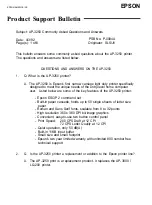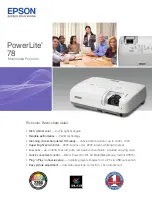
KS55 SERIES OPERATION MANUAL
m
Bar Code
System
Num. of characters
Remarks
<43>H EAN13
n
= 12
48
≤
d
≤
57
<45>H CODE39
1
≤
n
≤
255
48
≤
d
≤
57, 65
≤
d
≤
90, 32, 36,
37, 43, 45, 46, 47
<46>H ITF
1
≤
n
≤
255 (even)
48
≤
d
≤
57
<49>H CODE128
2
≤
n
≤
255
0
≤
d
≤
127
[Notes]
●
n
indicates the number of bar code data bytes, and the printer processes
n
bytes
from the next character data as bar code data.
● If
n
is outside the specified range, the printer stops command processing and
processes the following data as normal data.
● If
d
is outside the specified range, the printer only feeds paper and processes the
following data as normal data.
●
If the horizontal size exceeds printing area, the printer only feeds the paper.
●
This command feeds as much paper as is required to print the bar code, regardless
of the line spacing specified by
ESC 2
or
ESC 3
.
●
This command is enabled only when no data exists in the print buffer. When data
exists in the print buffer, the printer processes the data following
m
as normal data.
●
After printing the bar code, this command sets the print position to the beginning of
the line.
●
This command is not affected by print modes.
●
The number of data for the ITF bar code must be even numbers. When an odd
number of bytes of data is input, the printer ignores the last received data.
●
When Code128 (
m
=49h) is used:
1. When using Code128 in this printer, take the following points into account
for data transmission:
The top of the bar code data string must be the code set selection
character (CODE A, CODE B or CODE C), which selects the first
code set.
Special characters are defined by combining two characters “
{
“ and
one character. The ASCII character “
{
“ is defined by transmitting “
{
“
twice consecutively.
Specific character
Transmit data
ASCII
Hex
Decimal
SHIFT
{S
7B, 53
123, 83
CODE A
{A
7B, 41
123, 65
CODE B
{B
7B, 42
123, 66
CODE C
{C
7B, 43
123,67
FNC1
{1
7B, 31
123, 49
FNC2
{2
7B,32
123, 50
FNC3
{3
7B, 33
123,51
FNC4
{4
7B,34
123, 52
“{“
{{
7B, 7B
123, 123
46 of 66
















































